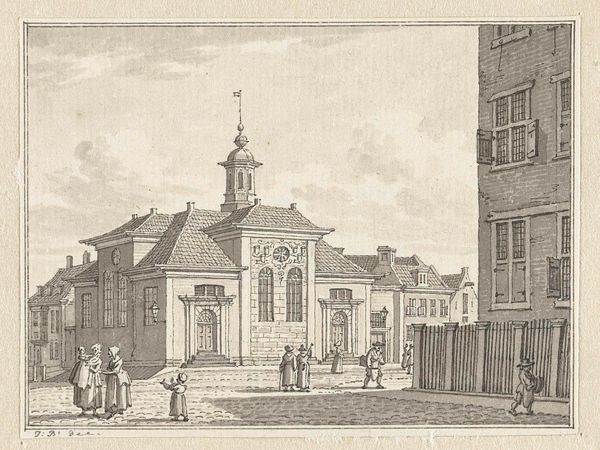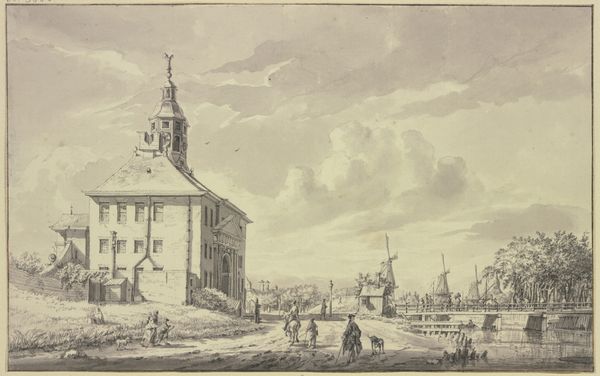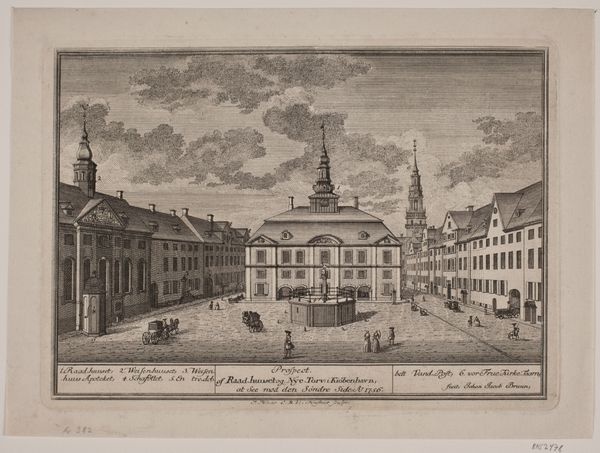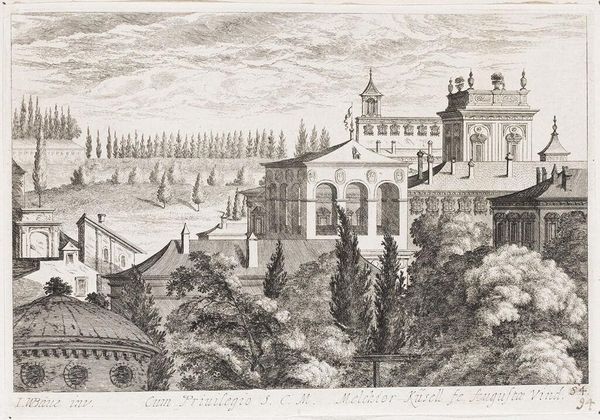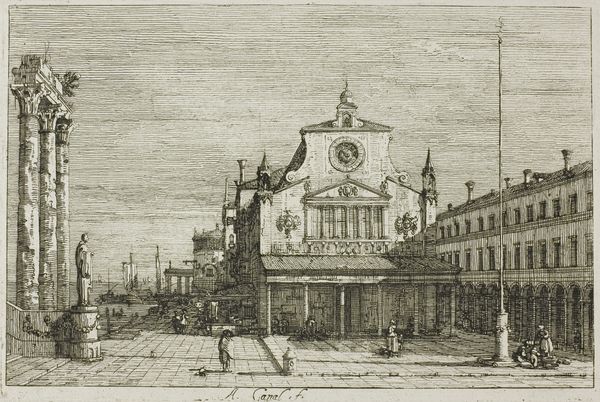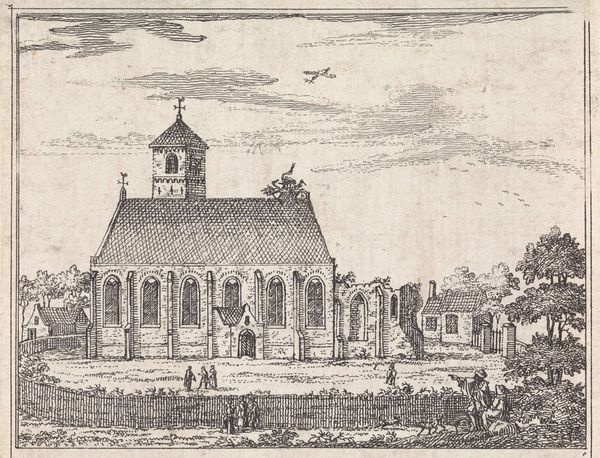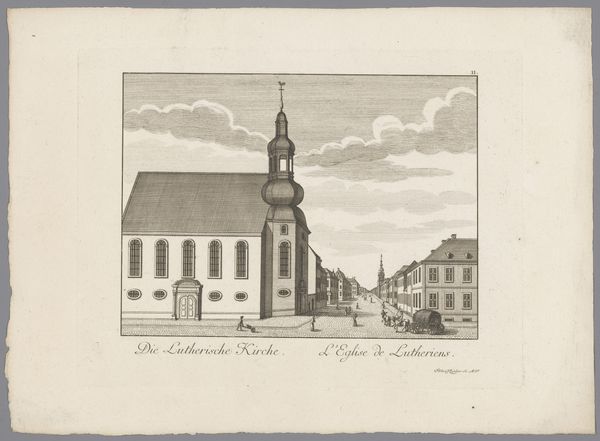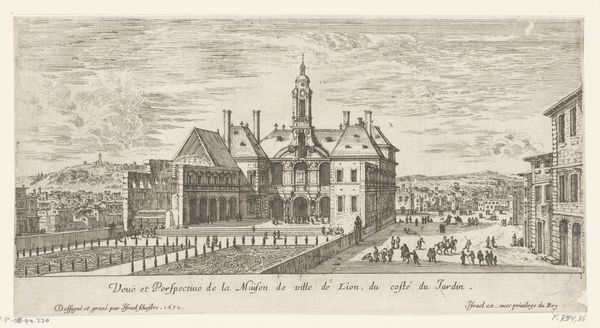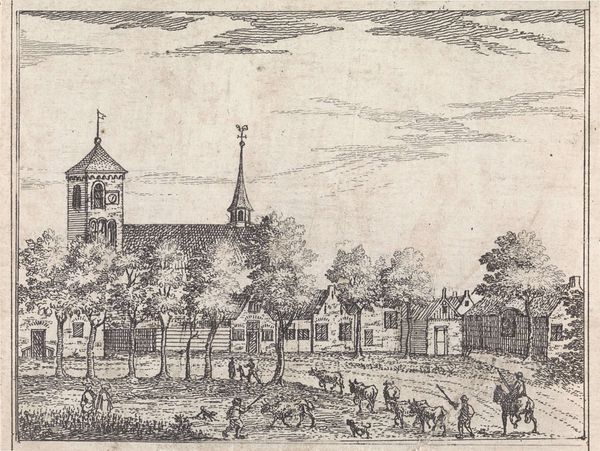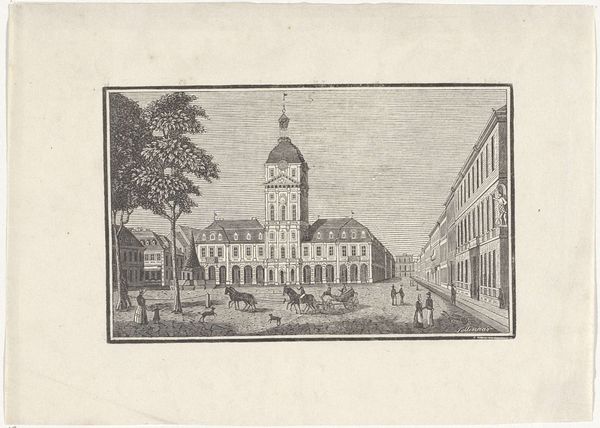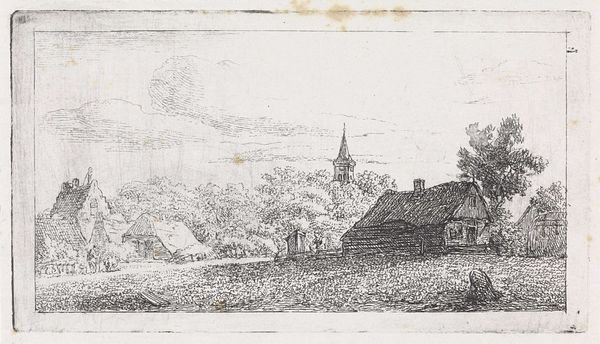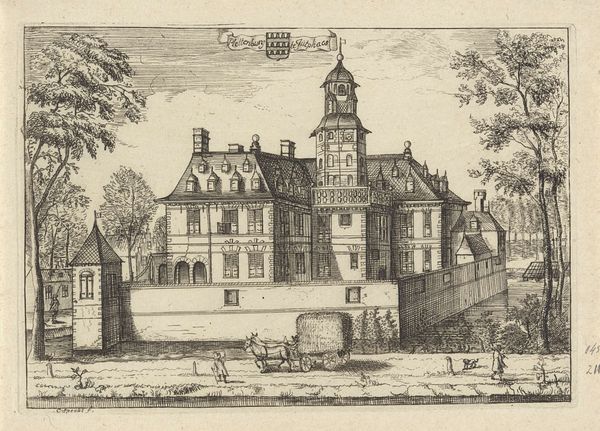
drawing, coloured-pencil, print, pencil, architecture
#
drawing
#
neoclacissism
#
coloured-pencil
# print
#
landscape
#
oil painting
#
coloured pencil
#
pencil
#
15_18th-century
#
cityscape
#
watercolour illustration
#
watercolor
#
architecture
#
realism
Copyright: Public domain
Curator: Charles Willson Peale's print, "A Front View of the Statehouse at Annapolis," created around 1800, provides us with a fascinating glimpse into early American architecture and civic identity. Editor: Okay, immediately I’m thinking Wes Anderson does early American political lithographs. There's a quaint symmetry here. Curator: It is fascinating to situate Peale's artistic choices within the context of the nascent republic, the Statehouse is presented almost as a stage for the unfolding of American democracy. How do the visual elements reinforce specific ideological narratives about governance and power? Editor: Right, because the scale throws me off—the people look like afterthoughts. Is that intended to communicate that government buildings are, I don’t know, above the concerns of the ordinary person? Or simply celebrating the accomplishment of the edifice itself, more of an inspirational thing? Curator: It prompts consideration of accessibility and transparency, both literally, in terms of physical access to the building depicted, and metaphorically, concerning the openness of governance. Do you think the composition reflects this push-and-pull tension between civic duty and elitism? Editor: Maybe. What strikes me more, to be honest, is the overall subdued quality, even a muted palette. It's not exactly radiating optimism, right? Like the American experiment is something to be considered, contemplated... not necessarily celebrated with fireworks. Curator: Peale was deeply embedded in the intellectual and political circles of his time, which informs his work. Think about how the formal architectural design echoes classical ideals, reflecting the aspirations for reason, order, and civic virtue so central to the Enlightenment thinking and the Founding Fathers. Editor: Yes! This feels about control. Maybe that explains my gut-level Wes Anderson reaction... a director similarly fond of visual and thematic control, though usually laced with heavy irony, of course. Still, it's interesting. A portrait of power where maybe even Peale didn’t fully realize the picture that he was making. Curator: Absolutely. It invites questions about how those aspirations measure against the realities of the new nation. The layers of meaning within something that at first glance, can appear straightforward is always engaging. Editor: Always. I still get the melancholy mood more than any kind of power statement from this picture, though. Maybe because in art, even statehouses are figures from a bigger drama and not its masters.
Comments
No comments
Be the first to comment and join the conversation on the ultimate creative platform.
